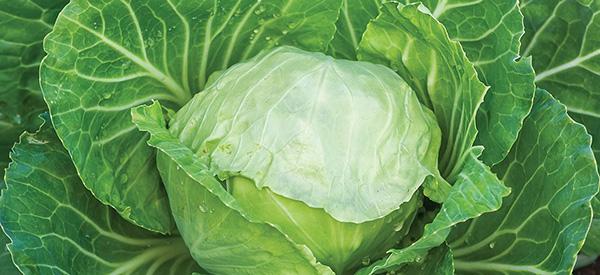
Cabbage
The name Cabbage covers several cultivars of Brassica oleracea all of which are popular annual vegetables. These plants are closely related to cauliflower, Brussel sprouts, and broccoli.
This leafy plant is found in green, white, or pale green, and red or purple varieties all of which are popular additions to a wide range of dishes in the cuisine of many countries around the world.
What is perhaps less well known is how many uses and how much value cabbage offers from a health and well-being perspective.
The History Of Cabbage
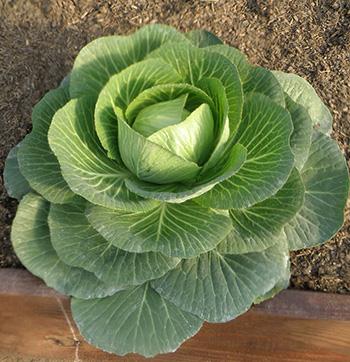 The history of this plant is not easy to trace because there are so many varieties and many records simply refer to Brassica without any specific details about variety or plant type. In fact, it’s possible the term was used broadly for any edible, leafy greens.
The history of this plant is not easy to trace because there are so many varieties and many records simply refer to Brassica without any specific details about variety or plant type. In fact, it’s possible the term was used broadly for any edible, leafy greens.
It is less difficult to find records of domestic growing and harvesting of cabbages. The earlier varieties can be traced back to 1,000 BC in central and western Europe with Savoy varieties appearing in the 16th century. It is also thought that earlier forms of this plant were open leafed while those with heads appeared later.
There are indications that the Ancient Greeks, the Romans, and – later – the Egyptians, and the Anglo-Saxons in Britain included Brassica in their diets. The Greeks and Romans also used it as a medicinal plant to treat headaches, gout, and gastric upset. Interestingly, this was a food favored by rich and poor alike. It was also eaten in Eastern Europe and taken by colonizers and traders to India, North America, Australia, and Japan.
Where This Plant Is Found
Again, because of the lack of accurate, specific records about Brassica types, it is hard to say where cabbage is native to. There is also the complication of wild versus domesticated and cultivated varieties. Regardless of origins, the cabbage is now naturalized on every continent and grown in domestic and commercial settings.
Related: The Complete Map of Edible Plants: Find Out What You Have in Your Area! (Video)
How To Identify Cabbage
Identifying cabbage is unlikely to be difficult for most of us as we see it in our grocery stores and on restaurant menus both at home and when we travel abroad. The only time it may be harder is when the plants are young and yet to grow the all-too-familiar head.
Seedlings And Young Plants:
- Leaf: The first leaf to appear is heart-shaped. As the young plant grows, the leaves grow in a rosette shape from the central stalk. Once there are 8 to 15 leaves the adult leaf growth begins.
- Stalk: The central stalk begins to thicken as the plant grows.
- Root: The root is a thin taproot.
Mature plant:
- Leaf: As the plant matures, the leaves develop thick petioles and begin to cup upwards. They are thick and alternating and the veins may be prominent. Some varieties’ leaves are lobed, some wavy or curly and loose-fitting, others tightly wrapped around the leaves below to form the familiar head. Some also have leaves with a waxy appearance.
- Stalk: The central stalk is short, thick, grows to a rounded point, and is only visible just above the ground and below the leaves and in the cross-section of the head.

- Shape: Depending on the variety, adult cabbages may be round, pointed, or oblate. They are categorized as crinkle-leaf loose-head (like the Savoy cabbage) or smooth-leaf firm-head (such as the white cabbage). The faster a Brassica type grows, the smaller the head is likely to be.
- Weight: there is a great deal of variation in this regard. The range is 1 – 2 pounds / 500 grams to 1 kilogram.
- Colors: Depending on the cultivar, Brassicas may be white, a range of greens from pale to dark, and purple.

- Flower: The plant sends out long, erect stems that bear white or yellow flowers that go to seed. Each flower has four petals and dry to form a fruit that releases small, round, brown, or black seeds.
- Root: The root system is shallow and fibrous with, usually, little root matter growing deeper than 12 inches or 30 centimeters.
Identifying cabbage is not a challenge for many. The only issue is in differentiating cultivars.
How To Grow Cabbage
Cabbages thrive in moist alkaline or pH-neutral soil and in a position where they will get sun. The soil should be well prepared before planting. Digging in compost or some type of well-rotted organic matter will boost growth and reduce the risk of fungal root disease.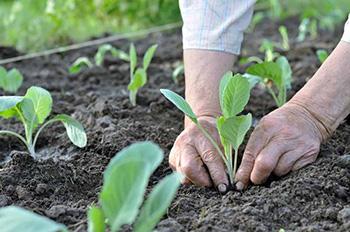
Brassicas can be grown from seedlings or seeds. The spacing between seedlings and seeds varies depending on the variety you are growing, so follow the directions on the pack. Seeds should be planted at a depth of ¾ inch / 2 centimeters and started inside and then planted out when they are about 5 weeks old.
The lowest leaves should be placed at ground level. With seedlings, it is also crucial to press the soil around the plant down very firmly. This prevents pests from laying eggs around the stem and roots. Fill the hole with water several times before you fill it with soil. This technique reduces the need for frequent watering.
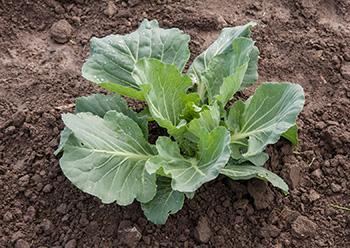
In terms of general care, if the weather is dry, water the cabbages every 10 days or so. Once heads have formed, increased watering will increase their size. The soil should not ever dry out completely or become water-logged. In addition, cabbages should be fed with a nitrogen-rich liquid fertilizer every fortnight.
Unfortunately, these plants are susceptible to a range of pests and diseases including caterpillars of various kinds, clubroot which is a fungal disease, cabbage root fly, slugs, and snails. A fine mesh can prevent insects such as moths from laying eggs on plants. There are a range of remedies and deterrents – chemical and biological – to treat or guard against these various problems.
How To Harvest This Plant
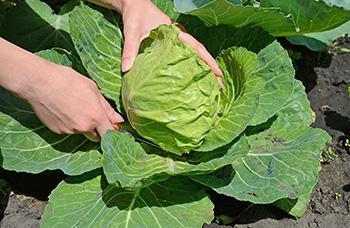 Most varieties of cabbages are ready for harvesting after about 20 weeks. However, growth rates do vary so consult the packaging that came with your seedlings or seeds and keep an eye on head formation.
Most varieties of cabbages are ready for harvesting after about 20 weeks. However, growth rates do vary so consult the packaging that came with your seedlings or seeds and keep an eye on head formation.
Harvesting cabbage is straightforward. Use a sharp knife and cut through the stem just above ground level.
If you are harvesting spring or summer cabbages, cut across (½ inch / 2 centimeters deep) and you may enjoy a second crop although the heads will be much smaller. The outer leaves should be discarded.
What Cabbage is Good For And The Natural Remedies Made From It
Cabbage owes its reputation as a nutritious and health-giving vegetable to the range of vitamins, minerals, and other active ingredients. These include:
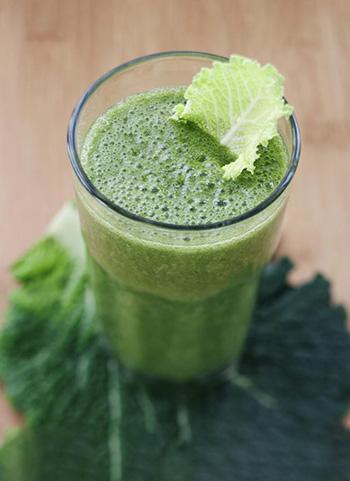
- Antioxidants including polyphenols
- Calcium
- Fiber
- Folate
- Iron
- Manganese
- Magnesium
- Potassium
- Sulfur compounds
- Vitamins A, B-6, C, K-1, and K-2.
Medicinal Seeds: Last Minute Deal
As a result, it is thought that cabbage may:
- Ease inflammation
- Aid digestion
 Boost heart health – this specifically applies to red cabbage
Boost heart health – this specifically applies to red cabbage- Reduce blood pressure
- Lower cholesterol
- Relieve breast swelling and pain
- Ease constipation
- Improve external ulcers and abscesses when used as a poultice
- Maintain eyesight
- Improve bone health.
What part of the plant is used?
While the central stalk is removed, the rest of the head of the cabbage is eaten.
DIY Cabbage Recipes
We are going to have a look at two recipes. The first is a popular way to eat this healthy vegetable, and the second is so you can apply it topically:
1. Sauerkraut / Pickled Cabbage:
Ingredients
- Fresh, medium-sized whole cabbage head (as many heads as you wish to pickle)
- Salt (table or sea)
- Luke-warm water
Method
- Remove the outer leaves

- Cut out the heart or core

- Fill the cavity with table or sea salt and press the salt down. The quantity of salt should be enough to fill the cavity of the cabbage when the salt is packed down, so how much you use depends on how big the cabbage head is and the cavity size.

- Place the cabbage in a suitable container with the underside up
- Pour the water down the side, not over the cabbage, until it is submerged
- Place a plastic plate over the cabbage

- Cover the container with a plastic bag
- Place a weight on top of the plate (a bottle filled with water works well)
- Place the container in a warm place. Fermenting it at a temperature of 65-70°F is ideal. The cooler the temperature while fermenting, the crunchier the resulting sauerkraut will be. Conversely, if you are in a warmer climate or it’s summer you can expect it will be a softer texture. If it’s warmer, check it more readily. Always store your fermenting sauerkraut away from direct sunlight.
- Check on the cabbage every 3 days to ensure that it is not spoiling
- Leave to pickle for 2 or three weeks until the cabbage turns yellowish-brown

- Remove the cabbage. Chop or cut up the cabbage
- Store the chopped sauerkraut in airtight jars in some of its pickling water.
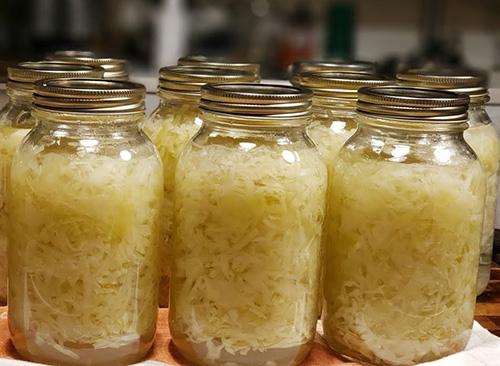
The sauerkraut will have a shelf life of several months as the salt acts as a preservative.
Sauerkraut is even more nutritious than cabbage alone and this is due to the fermentation process. Here are some of the nutritional benefits it contains (on top of the list above for cabbage alone):
- Probiotics – The good bacteria in it helps keep your gut flora healthy. This aids your digestive system.
- Vitamin K2 – Sauerkraut is one of the few plant sources that contain K2 (or menaquinone), which helps protect your bones.
As an added bonus, sauerkraut also aids weight loss. This is because it’s low in calories and the high fiber content helps you stay fuller longer. Probiotics may also be key to weight loss by decreasing fat absorption.
2. Cabbage Compress:
Ingredients
- Fresh white cabbage leaves
Method
- Remove leaves from the cabbage head
- Wash and dry the leaves

- Use a sharp knife to remove the thick central veins
- Dip the leaves in hot water OR heat them in the microwave on low for 30 seconds
- Use a rolling pin to gently bruise the leaf, release the juices, and soften it

- Ensure the leaves are warm but not so hot they will cause burns
- Apply the leaves to the area requiring treatment

- Cover the leaves with cling film or a bandage to keep them in place

- Keep the compress in place for up to an hour and apply up to three times a day
- Note: If there is any itching or swelling when the compress is in place, remove it immediately!
Uses
It is claimed that warm, bruised, whole leaves can be applied to swelling and bruises to ease pain and to sores, boils, and minor wounds to draw out infection.
The only application that seems to have a clinical ‘dose’ is when washed and chilled cabbage leaves are used as a compress for painful or hard breasts suffered by breastfeeding women.
The chilled cabbage leaves should be kept against the breast until they reach body temperature, this usually takes 15 – 30 minutes. This remedy can be used 1 to 4 times a day for up to three days.
How To Preserve This Plant
The only ways to preserve this vegetable is by pickling it or washing, drying, and freezing it. Cabbage will only keep well for a few days, especially out of the refrigerator.
What Plants Resemble Cabbage?
There is unlikely to be confused about identifying cabbage, even with ornamental cabbages. However, it can be useful to be familiar with certain popular varieties or cultivars.
| White | Red | Savoy | Chinese / Napa | Spring | Ornamental |
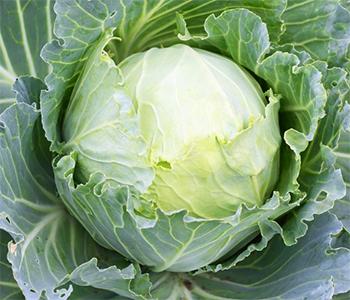 |
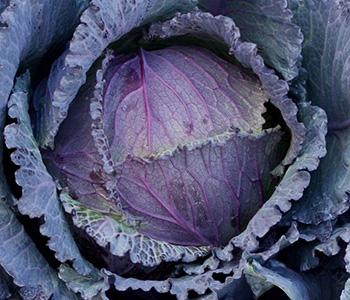 |
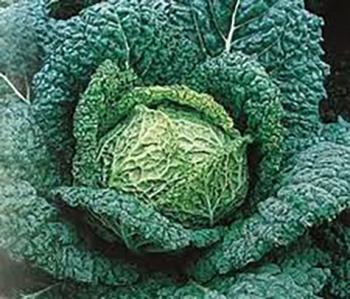 |
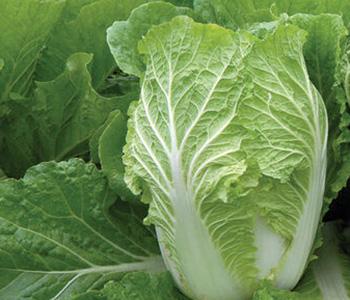 |
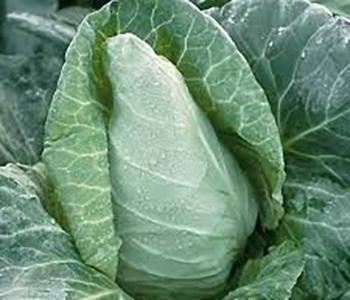 |
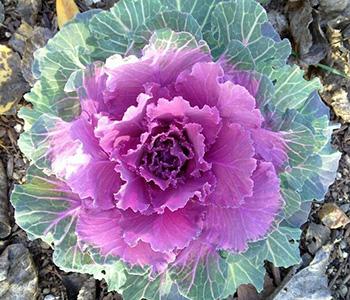 |
| Pale green to white | Red to deep purple | Green, lighter in center | Light green, wide veins | Light green | Very wide range of colors |
| Round | Round | Round | Oval | Pointed | Round |
| Smooth-leaf, firm-head | Smooth-leaf, firm-head | Smooth-leaf, firm-head | Smooth-leaf, firm-head | Smooth-leaf, firm-head | Smooth-leaf, firm-head |
| Edible | Edible | Edible | Edible | Edible | Inedible |
It is a good idea to select the cultivar you want based on your personal needs. For example, when you want to harvest, and which taste you enjoy the most. The ornamental cabbage is purely a colorful addition to a container or flower bed in a garden.
Warning And Cautions
There are very few warnings and cautions associated with the Brassica group of plants:
- An issue that some individuals do experience, however, is that eating a lot of cabbage can lead to gastric bloating and flatulence.
- Some individuals may be allergic to members of this group of plants (cabbage, cauliflower, Brussel sprouts, and broccoli)
- Diabetics who are on medication should avoid cabbage as it can lower blood sugar levels
- Patients on Warfarin and other blood thinners should eat this vegetable in moderation
- It is important to wash leaves well if they are not going to be cooked as there is a small risk of bacterial growth on the plants that can cause illness in people.
You may also like:
 How to Make a Healing Salve with Cabbage and Aloe Vera
How to Make a Healing Salve with Cabbage and Aloe Vera
Similar to Morphine: The Best Natural Painkiller that Grows in Your Backyard (Video)
What Happens If You Eat Cabbage Every Day?


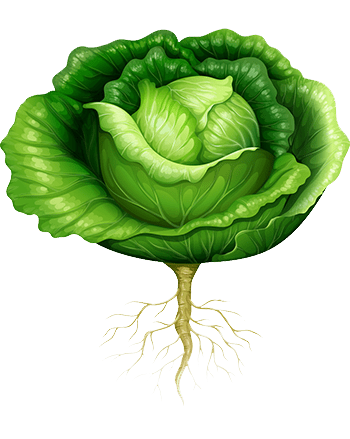
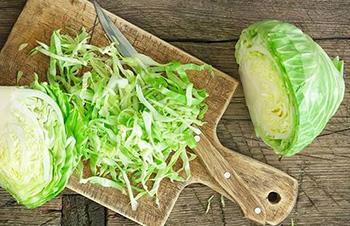 Boost heart health – this specifically applies to red cabbage
Boost heart health – this specifically applies to red cabbage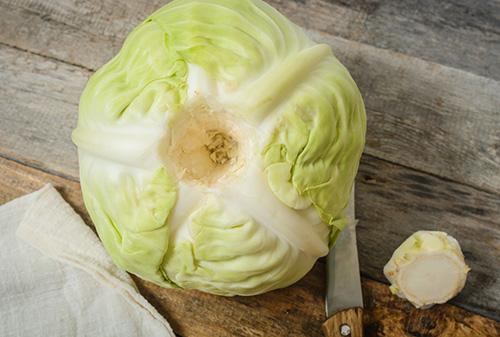

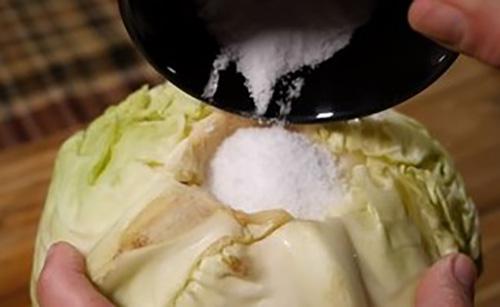
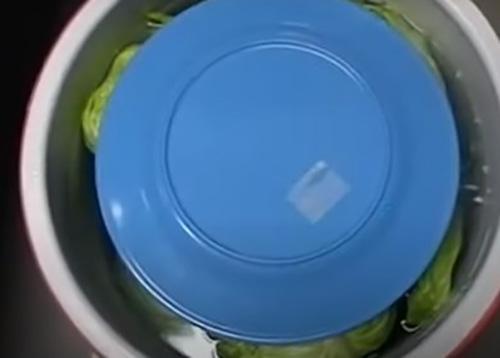
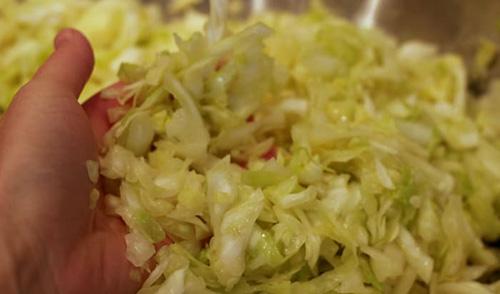
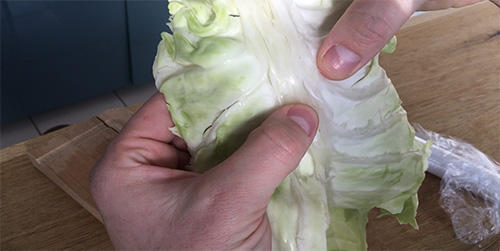
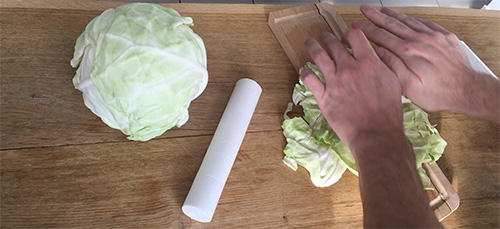
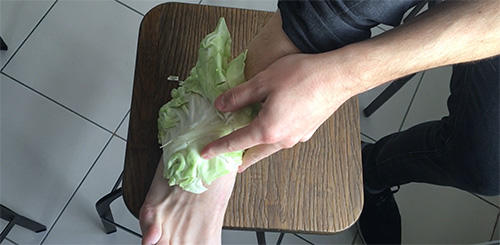
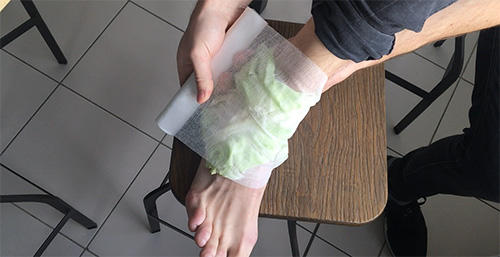
For the saurkraut recipe, when you say submerged, is this above the top (bottom) of the cavity? Either way, by how much? Thanks.
Hi Heather,
The amount of brine you will need to make will be determined by the size and shape of your container as well as the cabbage heads. The heads will want to float so you will need to weigh them down with something.
Most of the Sauerkraut making directions that I have seen, and from the Alaskan Agriculture center, say to wash, and cut the cabbage into small even sized pieces, a grater with slicers, or shredders on it works well. The key is keeping it fairly small, and try to keep it even in size. Place the shredded cabbage in a large jar, or crock, and add salt. I can’t remember if it was a tsp, or table spoonful. Any way sprinkle the salt on the cabbage, and place a weight on it to keep the cabbage from floating and not being in the fermenting liquid. If there seems to not be enough liquid, you can add a small amount of brine. But it is just basically just cabbage and salt. You can taste it after a week or so, and see if it is at the flavor you prefer, mild or strong taste. But the fermented juice was always a favorite of mine as a child. Sometimes when money was short, Mom would make sauerkraut, and hot dogs. Couldn’t afford the wurst or other forms of sausages.
The Sauerkraut making directions that I have seen, and from the Alaskan Agriculture center, say to wash, and cut the cabbage into small even sized pieces, a grater with slicers, or shredders on it works well. The key is keeping it fairly small, and try to keep it consistent in size. Place the shredded cabbage in a large jar, or crock, and add salt. I can’t remember for sure if it was a tsp, or table spoonful, but I am thinking it was only a teaspoonful. Any way sprinkle the salt on the cabbage, and place a weight on it to keep the cabbage from floating and not being in the fermenting liquid. It will make it’s own liquid. The salt will draw it out. If there seems there is not be enough liquid, you can add a small amount of brine. But it is just basically just cabbage and salt. You can taste it after a week or so, and see if it is at the flavor you prefer, mild or strong taste. But the fermented juice was always a favorite of mine as a child. Sometimes when money was short, Mom would make sauerkraut, and hot dogs. Couldn’t afford the wurst or other forms of sausages. Sometimes potatoes were added. I still make it with non gmo or chemically laced hot dogs, or a good sausage that doesn’t the nasty curing and preservative chemicals which simply are not needed. New technique…… called freezing. But that only keeps it available for sale for a month or so. But it kept the family fed, and happily so. I don’t eat potatoes, or wheat anymore now though. So no hot dogs and sauerkraut, and mustard.
Hi Richard,
Thank you so much for sharing this experience with us.
We really appreciate it.
Here is a different recipe for Saurekraut:
https://thelostherbs.com/what-happens-if-you-eat-cabbage-every-day/
God bless!
Whoo easy on the sodium ( salt) fermenation only requires 1.8 – 2%
brine so weigh both please…no sense eating healthy if you kill yourself with the sodium.
Wondering about using healthy himalayan salt instead of the nutritionally void dead Morton salt?